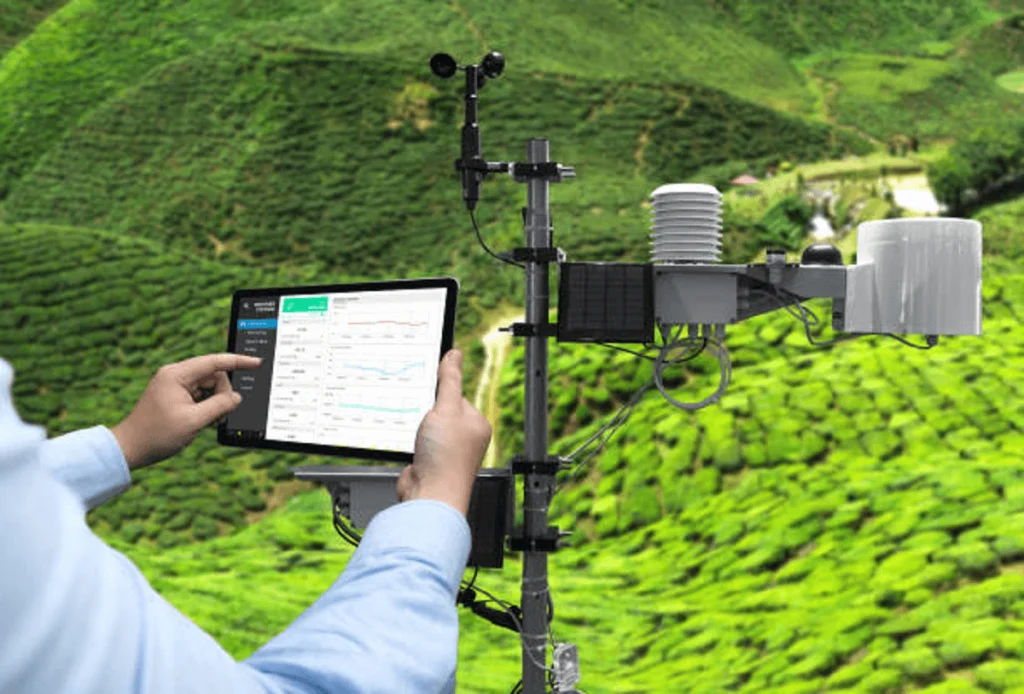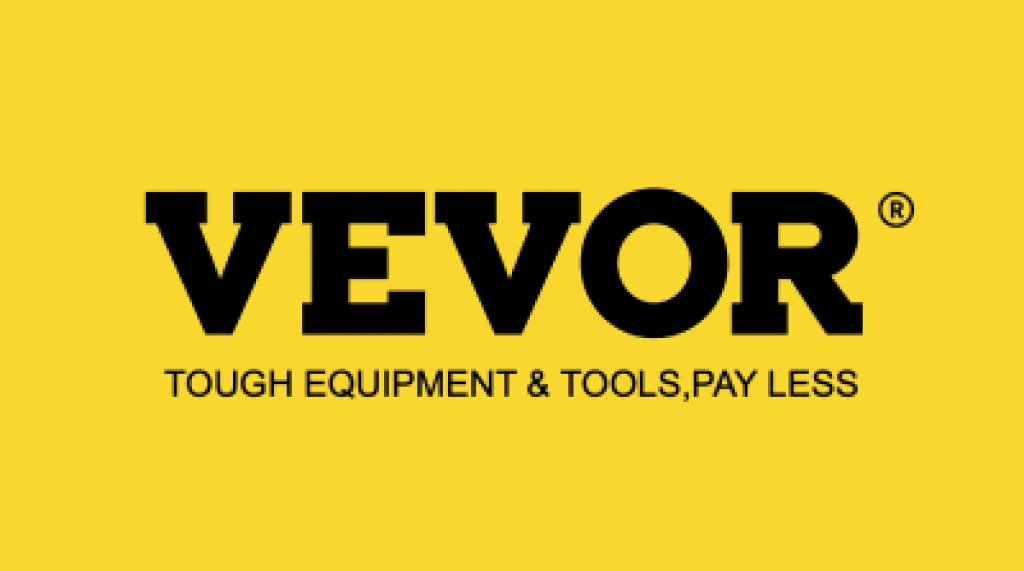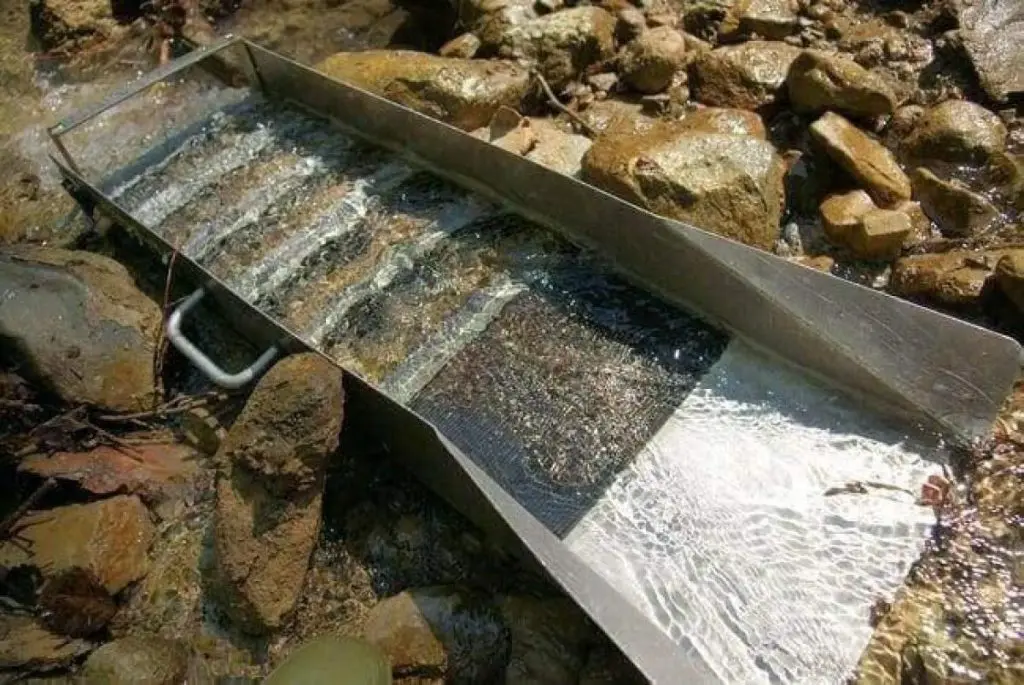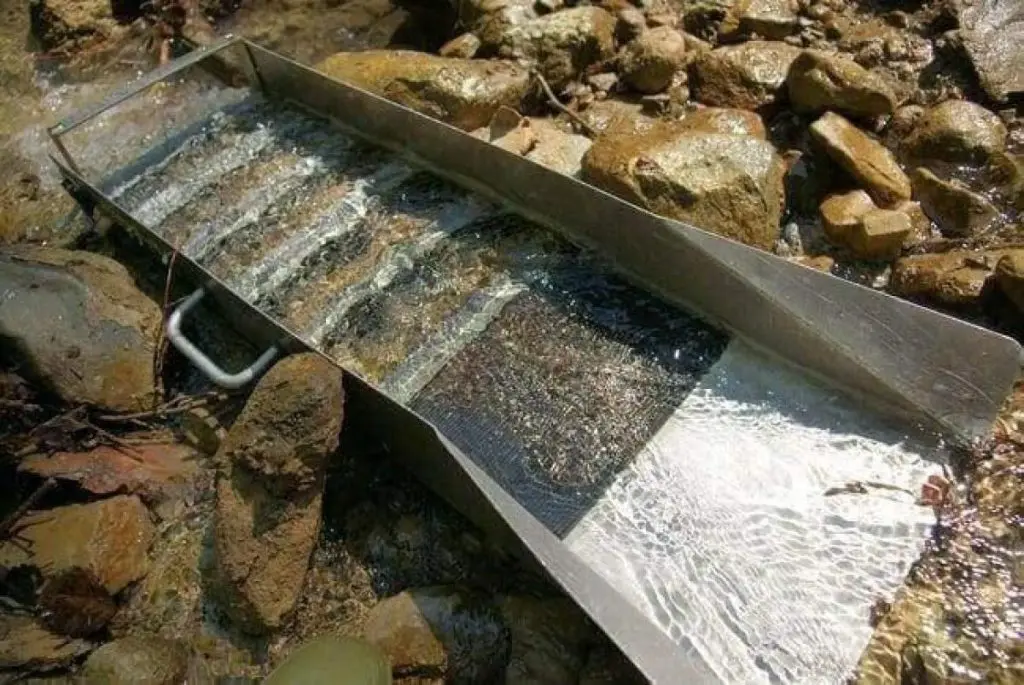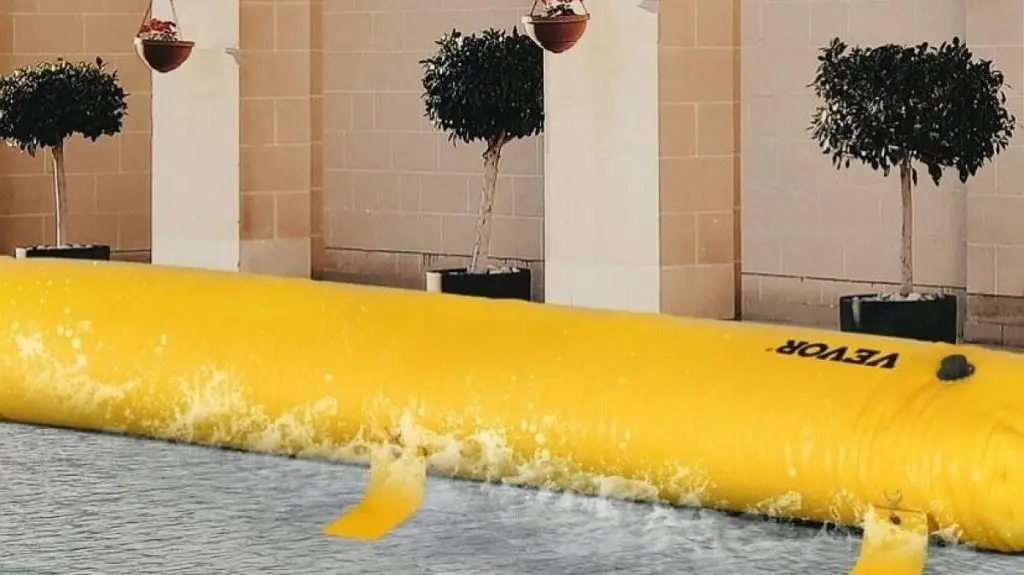Do you want to read the weather daily without relying on a weather channel? Would you like to plan your days and months to suit the climate? Then, we’ve got just the thing! This VEVOR weather station will change your life.
The VEVOR 7-in-1 weather station measures essential atmospheric conditions, including air pressure, temperature, humidity, wind speed, and wind direction. It then transmits this data to an indoor wi-fi screen.
Imagine getting all the info you need through your smartphone! This guide shows you the benefits of installing the VEVOR weather station and how to choose the perfect type.
Table of contents
What is a Weather Station?
Let’s start from the beginning, shall we? Firstly, we’ll define a weather station also called a meteorological station, then show you the different types, and end with some reasons you should get one.
Weather Station Definition
What is a meteorological station or weather station? Weather stations are devices installed on land or in water for measuring the atmosphere. They collect atmospheric data by studying every weather change, including the wind movement, sun heat, and precipitation.
Types of Weather Stations
Whether you’re installing a weather station for personal or professional use, there are different types you can choose. We’ve split them into purpose-based and location-based devices to make your selection easy.
Purpose-Based Weather Station
You could have a weather station for personal use as an individual or community member. As such, you’ll need one with a simple setup that anyone can operate in emergencies.
That’s where the VEVOR 7-in-1 weather station becomes useful. We’ll talk more about this briefly, but first, let’s look at another purpose.
Professionals like mariners, aviators, and agriculturists get weather stations to amplify and improve safety in their work. Can you imagine a pilot flying without knowing the climate conditions? Exactly!
Location-Based Weather Station
Where do you want to install your weather station? Is it on land or in the sea?
Most personal weather stations are land-based devices you can install indoors or outdoors, like the VEVOR 7-in-1. Meanwhile, the mariners need an undersea installation because that’s where they work.
The Importance of Weather Stations
We’ve already given you a glimpse of the importance of weather stations, but let’s expand on that. You should get a weather station because it helps with weather forecasting, preparing you for disaster emergencies like floods, tornadoes, and hurricanes.
It’s also useful for academic climate research. You can complete your work from the comfort of your home!
What a Weather Station Measures
Do you want to know how the weather station works? What does it measure, and how can you interpret the data?
These devices measure essential weather elements for regular day-to-day activities and advanced weather elements for sophisticated purposes like large-scale agriculture.
Essential Weather Measurements
Essential weather measurements are the basic conditions that affect the overall climate. They’re as important for professional use, like meteorology, marine expeditions, and aviation, as for personal use, like knowing when to wear a sweater because it’s cold outside.
Check out the parameters:
- Temperature: Temperature measurement tells you the warmth and coolness of the air and soil for people in agriculture. You can measure it in degrees Fahrenheit for Americans or degrees Celsius for the English.
- Humidity: This measures water vapor (cloud) in the air to determine the rain, fog, and potential thunderstorms.
- Wind Speed and Direction: Measures the wind speed to know how fast it blows beyond a static point per second or hour. It’s useful for monitoring storms so you can know when to panic or stay put.
- Rainfall: Water that goes into the clouds falls back down as rain and sometimes snow, hail, or sleet. Measuring rainfall prepares you for flood or drought using a proper irrigation system.
- Barometric Pressure: Gauges the amount of air in the atmosphere and tells you the changes in pressure that can cause rain, cloudiness, or heavy winds.
- Light: Not all Weather Station models can measure light, but the VEVOR 7-in-1 weather station device can. It tells you the intensity of sunlight in the area.
Advanced Measurements
If you want to take home weather monitoring a step further with the VEVOR 7-in-1 weather station, here are some advanced measurements:
- UV Index: Measures the level of radiation on a scale of 0 – 11. This is necessary for protecting your skin and eyes from UV damage.
- Air Quality: You can check your atmosphere for criteria air pollutants to protect public health and ensure you’re within legal parameters.
- Moon Phase Tracking: Astrology enthusiasts can use the weather station for moon phase tracking over a 28 to 29-day cycle.
How can you interpret this data?
Data Transmission and Recording
The VEVOR 7-in-1 weather station device is multifunctional, reads different atmospheric conditions simultaneously, and transmits real-time info on the screen. For further analysis, you can record its data in a book or on your mobile device.
Keep reading to learn more about the VEVOR device.
Benefits of Weather Stations
If you already watch the weather station daily, you’re probably wondering why you need a weather station. Firstly, we’ll say it doesn’t hurt to have alternate info sources, and secondly, what happens when you can’t access the TV or radio?
Here are some other reasons you should install the VEVOR weather station:
Informed Decision Making
No more getting stuck in a heatwave wearing thick clothing because you didn’t know the cool weather from the morning would change into severe heat at noon. Prepare for the day using the info you get from your weather station.
Improved Gardening and Agricultural Practices
Your crops and flowers will bloom better when you practice your agriculture and horticulture using informed data. You can use the weather changes to your advantage by planting water-loving greens in the rainy season.
Comfortable Monitoring
You don’t have to leave the comfort of your home when using the VEVOR weather station. An indoor screen transmits the data collected from the outdoor device.
Preparedness for Emergencies
When you see people lose everything during natural disasters, don’t you wish they could’ve avoided that? Getting a weather station gives you early warnings for potential weather hazards.
VEVOR Weather Station: Why it Stands Out

Here’s a deep analysis of why the VEVOR 7-in-1 should be your first choice:
Introducing the VEVOR Weather Station
The VEVOR weather station has two parts for indoor and outdoor wireless setup. It’s also waterproof, with many more features we’ll explore now.
Key Features and Specifications
Sensor Types
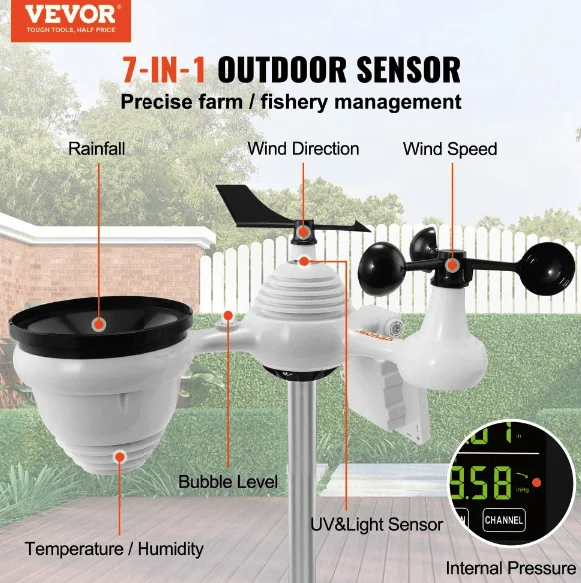
It has seven sensors for monitoring wind speed, direction, humidity, rainfall, moon phases, air pressure, and temperature.
Data Accuracy
Every data from the VEVOR 7-in-1 station is accurate because of real-time transmission.
Display
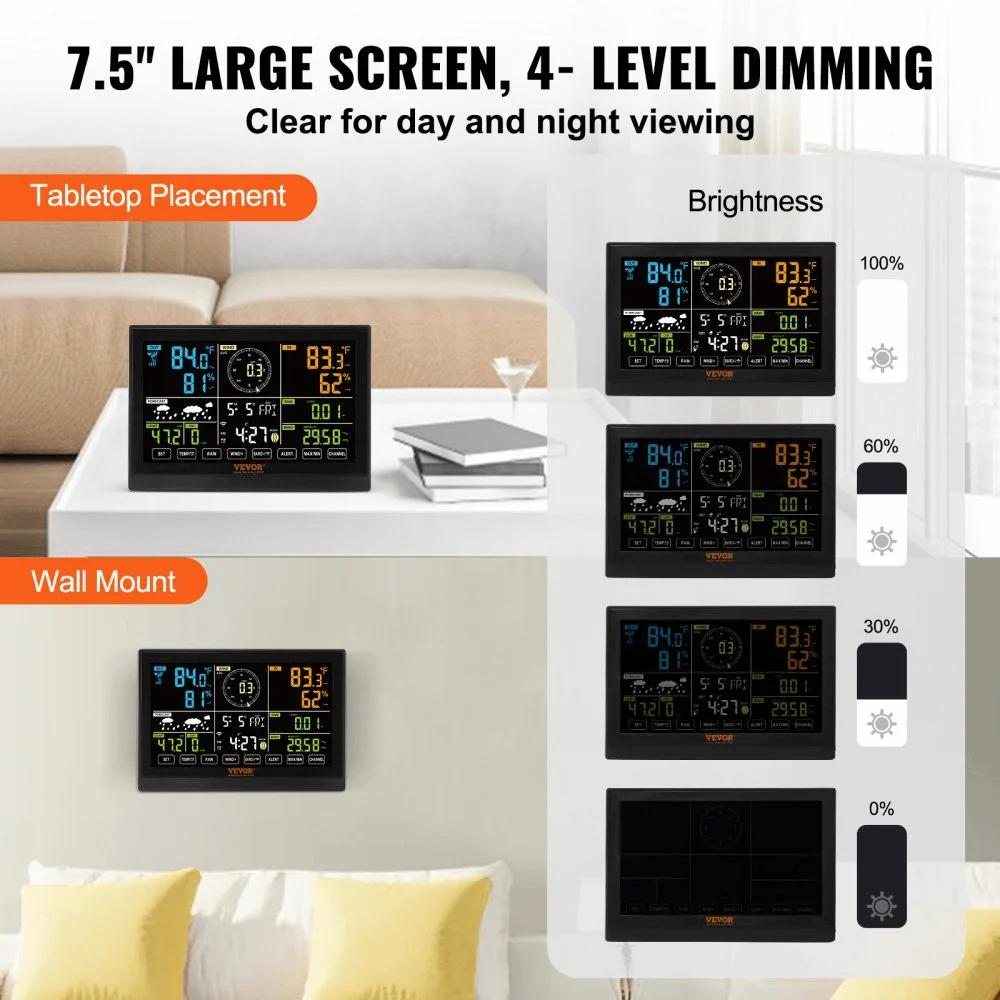
Its 7.5” wide HD screen displays all the data at once without straining your eyes. You can adjust the dimness in 4 levels and sync its time to your internet.
App Connectivity
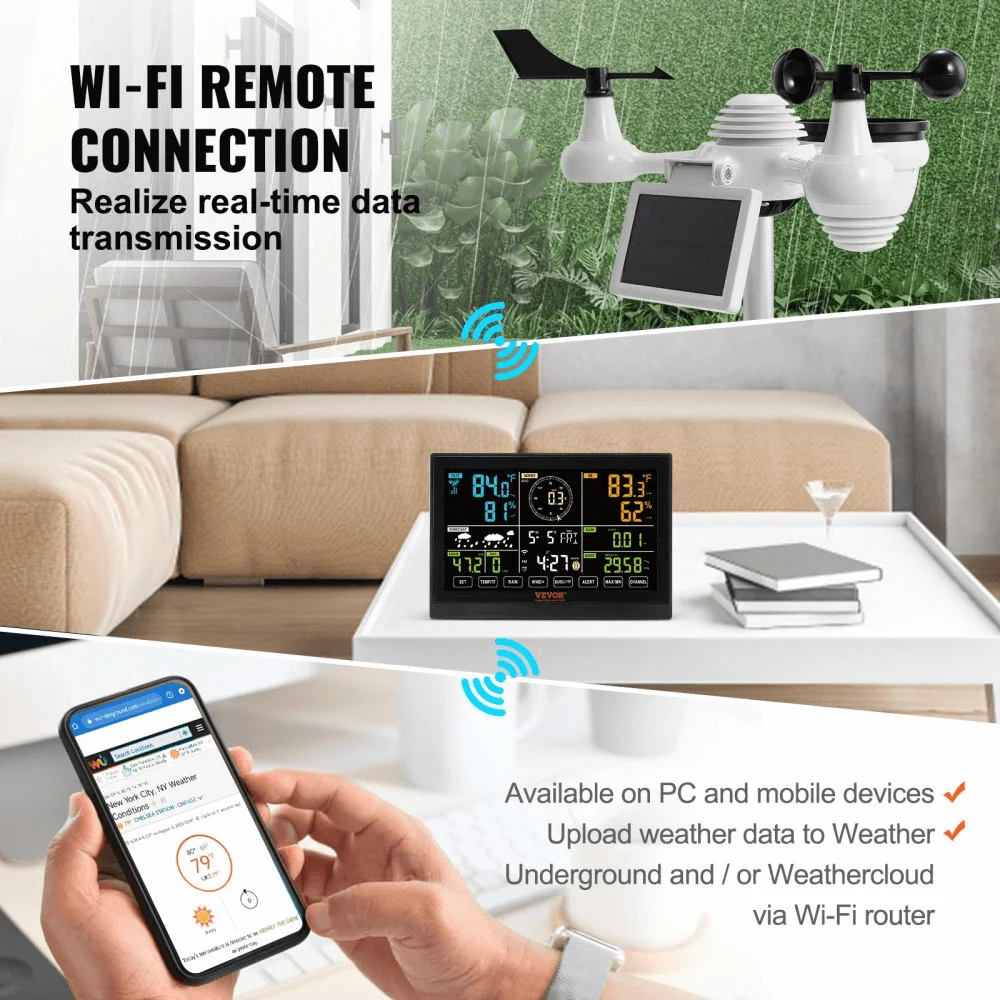
You can connect your VEVOR weather station to a wireless router and transmit real-time data. It can only connect to 2.4GHz.
Durability and Weather Resistance
You can install your outdoor VEVOR weather station 150m from your indoor display.
Despite its IPX6 waterproof level and easy-to-install screws, you can’t install your VEVOR weather station on metal fences. Also, interference from TV antennas, high-voltage lines, and towers should be avoided. Instead, set up in your courtyard, garden, rooftop, or chimney.
Additional Features
The VEVOR 7-in-1 weather station has a solar panel as a backup power source. It’s 4 x 3 in/100 x 70 mm wide for powering a rechargeable Ni-MH battery. This device also comes with an aluminum rod fixed bracket for outdoor installation.
Recommended For Your Project
Advantages of Owning a VEVOR Weather Station

Here’s a summary of why the VEVOR weather station is worth the purchase:
- At $100.99, it’s affordable considering the multipurpose features it offers.
- It comes with fittings for easy setup
- You can access your data comfortably and in real-time.
- You can connect to other weather monitoring platforms like WeatherCloud and Weather Underground.
Buyer’s Guide: Choosing the Right Weather Station for Your Needs
Before choosing a VEVOR weather station, you must create a checklist to get the most ideal product because there are different types.
Factors to Consider When Choosing a Weather Station
Intended Use
You can get the VEVOR 7-in-1 weather station device if it’s personal. But we recommend getting a specific type of weather station for professional usage.
Budget
How much are you willing to spend for a weather station? The VEVOR 7-in-1 device costs $100.99. You can also get the wireless one without a solar panel for less than $89.99.
Desired Features
Do you want easy access to your data on a large display? Or are you okay with one parameter? Only get the VEVOR weather station to monitor different atmospheric conditions.
Location and Environmental Conditions
Know your region to ensure your VEVOR weather station is compatible with the environment. It’s a good thing the VEVOR 7-in-1 weather station has solar panels and a wi-fi connection, so being in a remote area isn’t a dealbreaker.
Level of Technical Expertise
Some weather stations need professionals to install them, which will cost you a couple of dollars. But if you get the VEVOR 7-in-1, you can follow the manual and set it up yourself.
Conclusion
Now you know what a weather station is and how it can benefit you.
Remember that it’s as useful for personal use as professional use. Installing a VEVOR weather station prepares you for weather changes while improving your lifestyle practices, including agriculture, horticulture, and dressing.
Don’t forget to create a checklist to choose the most ideal type of meteorological station for you. With only $89.99 – $100.99, you can install your own state-of-the-art VEVOR weather station. It has all the features you’ll need in a high-quality weather station. Stop letting the weather surprise you, and start being proactive!

